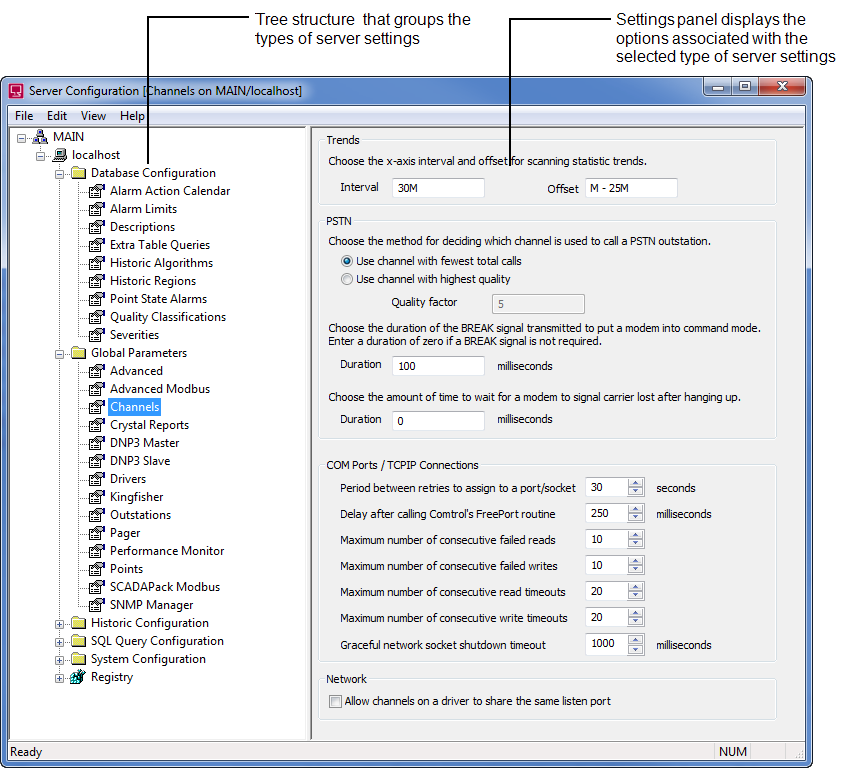The Geo SCADA Expert Server Configuration Tool contains a tree structure that groups the types of server settings. When you select one of the groups, the relevant settings are shown in the right-hand panel.

The server settings are grouped as follows:
Contains the settings that affect the items in the database, including:
- Alarm Action Calendar—Refer to Alarm Action Calendar Settings
- Alarm Limits—Refer to Alarm Limits
- Descriptions—Refer to Standard Point Descriptions
- Extra Table Queries—Refer to Extra Table Queries
- Historic Algorithms—Refer to Historic Algorithms (Custom)
- Historic Regions—Refer to Historic Regions
- Point State Alarms—Refer to Point State Alarms
- Quality Classifications—Refer to Point Quality Classifications
- Severities—Refer to Alarm and Event Severities.
- Advanced—Refer to Connection and Update Settings
- Channels—Refer to Channel Settings
- Drivers—Refer to Driver Settings
- <Driver name>—Refer to the driver-specific documentation.
- Outstations—Refer to Outstation Settings
- Points—Refer to Points Settings.
- Archiving—Refer to Archiving
- Configuration Changes—Refer to Configuration Changes Auditing
- Event Journal—Refer to Event Journal Storage Settings
- Historic Data—Refer to Historic Data Storage Settings
- Historic Files—Refer to Enable or Disable Historic Files
- Search Limits—Refer to Search Limits for Historic Data Searches.
- Historic Views—Refer to Historic Views
- Linked ODBC Tables—Linked ODBC Tables
- Parameters—Refer to Use the Parameters Settings to Define the SQL Query Row and Size Limit .
- Alarms—Refer to Alarms Settings
- Data Files—Refer to Data Files Settings
- Dictionaries—Refer to File Translation Dictionary Server Setting
- E-Mail—Refer to E-Mail Settings
- Emulate Server Version—Refer to Server Emulation
- Events—Refer to Events Display Settings for the Event Journal (Events List)
- Exclusive Control—Refer to Exclusive Control Settings
- File Upload—Refer to File Upload Settings
- Location—Refer to Locations of the Database Folders
- Logging—Refer to Logging and Monitoring
- Partners—Use the Partners Settings to define the type of system you are configuring. Refer to the relevant type of system:
- Permission Restrictions—see Setting up System Security
- Printing—Refer to Printer Settings
- Search Settings—Refer to Search Settings
- Security—see Setting up System Security
- System Calls—see System Calls Settings
- System Status—see System Status Settings
- Web—Refer to WebX Server Settings (Original WebX).
You should not alter the Registry settings without expert advice from Schneider Electric.
Driver-specific settings are described in the relevant driver documentation.